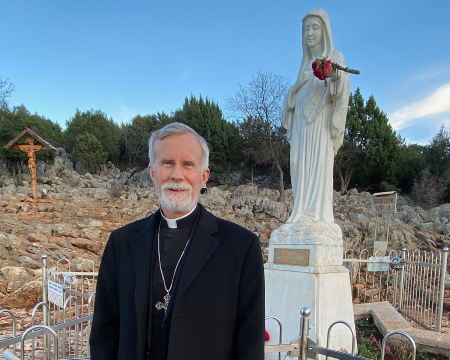 Hi readers, it seems you use Catholic Online a lot; that's great! It's a little awkward to ask, but we need your help. If you have already donated, we sincerely thank you. We're not salespeople, but we depend on donations averaging $14.76 and fewer than 1% of readers give. If you donate just $5.00, the price of your coffee, Catholic Online School could keep thriving. Thank you. Help Now >
Hi readers, it seems you use Catholic Online a lot; that's great! It's a little awkward to ask, but we need your help. If you have already donated, we sincerely thank you. We're not salespeople, but we depend on donations averaging $14.76 and fewer than 1% of readers give. If you donate just $5.00, the price of your coffee, Catholic Online School could keep thriving. Thank you. Help Now >
Cebú
FREE Catholic Classes
DIOCESE OF CEBÚ (CEBUANENSIS); DIOECESIS NOMINIS JESU
Located in the Philippine Islands . Cebú, the diocesan city, spelled also Sebú and Zebú, in the province of the same name, is so called from the island on which it is situated, in turn so called from the Indian ox ( bos indicus ), on account of a fancied resemblance between that animal and the outline of the island. Magellan discovered Cebú in April, 1521, but he lost his life in a foolhardy battle on the island of Mactan, opposite Cebú, and no trace of his expedition was left except the celebrated statuette of the Holy Child, called the Santo Niño , still held in the greatest veneration.
The Diocese of Cebú was separated from the Diocese of Manila, which originally included the whole Philippine archipelago, 14 August, 1595. The new territory comprised the present Dioceses of Cebú and Jaro, and the Vicariate Apostolic of the Marian Islands. The diocese now consists of the islands of Cebú, Leyte, Samar, Bohol, Siquijor, Camaguin, and the smaller islands adjacent. Since its establishment in 1595, twenty-two bishops have governed the Church of Cebú. The northern half of the island of Mindanao remains under the jurisdiction of the Bishop of Cebú, until the appointment of a bishop at Zamboanga, as provided for (1903) by Leo XIII, in the Bull "Quæ Mari Sinico". Cebú was the birthplace of the Christian religion in the Philippine Islands . It was here that it made its first stand against the gradually advancing forces of Mohammedanism. Father Urdaneta, an Augustinian friar, accompanied by six others of the same order, went to Cebú in April. 1565, and immediately began his work of evangelization. The first convert was a niece of Tupas, a native chief of great influence. Two other friars, Fathers Juan de Vivero and Juan de Villanueva, arrived with Salcedo in 1567. Shortly afterwards the Jesuits went to Bohol, in 1595, and also to Leyte, Samar, and Mindanao. They built fortified churches for defense against the Moros everywhere, and forts at Cebú, Iloilo, Misamis, Zamboanga, and other places. They also began, in 1595, the College of San Ildefenso, now called San Carlos College, in Cebú. The work of the missionaries was facilitated by the disposition of the brave but naturally peaceful Visayan people, who occupied most of the territory. The missionaries were opposed by the ferocious tribes of the Mohammedans, who for centuries had been gradually extending their sway eastwards, and by 1521 were strongly established in the western part of the island of Mindanao, in the Sulu archipelago. The efforts of the missionaries were threefold in character : defensive against the bloodthirsty Moros, who roamed over these seas in flotillas of ships; active in the evangelization of the tribes; and also didactic in the arts of peace, agriculture, trades, and the rudiments of learning. The natives, already well forward in trades, soon became expert carpenters, masons, workers in metals, weavers — in a word, well equipped to make the best use of the natural resources at hand. As the missionaries advanced, the domination of the Moros was gradually restricted, though even as late as 1856 occasional fleets of Moro boats appeared, striking terror into the peaceful Visayans. With the beginning of steam navigation, the Spanish ships of war at once assumed offensive tactics against the Moros, whose vessels were easily captured and destroyed.
After the insurrection of 1898, and the Spanish-American War that followed, the people suffered greatly, not only from the evils of war, but also from the loss of their cattle and horses by epidemics. Many of their churches were destroyed, not only by the insurrectos , but also by United States troops. The chief evil, however, was the lack of priests. The parishes average about ten thousand souls. In the mountainous regions about half a million of souls were without spiritual succour. The Franciscans, by whom many churches were formerly supplied, began to return, and the Jesuits worked with great success in Mindanao. Redemptorist Fathers from Ireland are exclusively occupied in giving missions to the people. The Lazarists have two colleges for boys, one in Cebú with 600, another in Samar with 350 pupils. The same Fathers have also charge of the ecclesiastical seminary , in which there are 85 students. A college for girls is conducted in Cebú by the Sisters of Charity of St. Vincent de Paul , with 500 pupils. An orphan asylum and trade school under the same Sisters care for 85 girls and a few small boys. A leper hospital was maintained for fifty years until 1906. The diocese contains 135 secular priests and 123 religious, of the following communities: Augustinians, Recollects, Franciscans, Benedictines, Jesuits, Lazarists, and Redemptorists. There are fifty-five schools in the diocese, with an attendance of about 12,000 pupils. The people are practically all Catholics, and are very devout and loyal to the Church. Estimated population, 2,145,679. The Right Rev. Thomas Augustine Hendrick, the first American bishop, was consecrated at Rome, 23 Aug., 1903, and took possession 6 March, 1904.
We ask you, humbly: don't scroll away.
Hi readers, it seems you use Catholic Online a lot; that's great! It's a little awkward to ask, but we need your help. If you have already donated, we sincerely thank you. We're not salespeople, but we depend on donations averaging $14.76 and fewer than 1% of readers give. If you donate just $5.00, the price of your coffee, Catholic Online School could keep thriving. Thank you.Help Now >








 Daily Readings for Sunday, April 21, 2024
Daily Readings for Sunday, April 21, 2024 St. Anselm: Saint of the Day for Sunday, April 21, 2024
St. Anselm: Saint of the Day for Sunday, April 21, 2024 A Prayer for the Dying and a Special Soul: Prayer of the Day for Sunday, April 21, 2024
A Prayer for the Dying and a Special Soul: Prayer of the Day for Sunday, April 21, 2024
